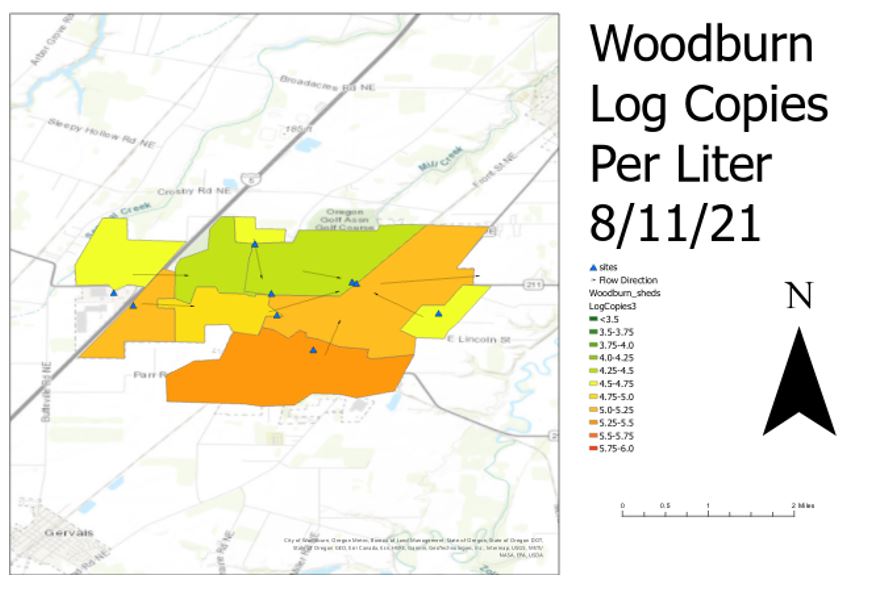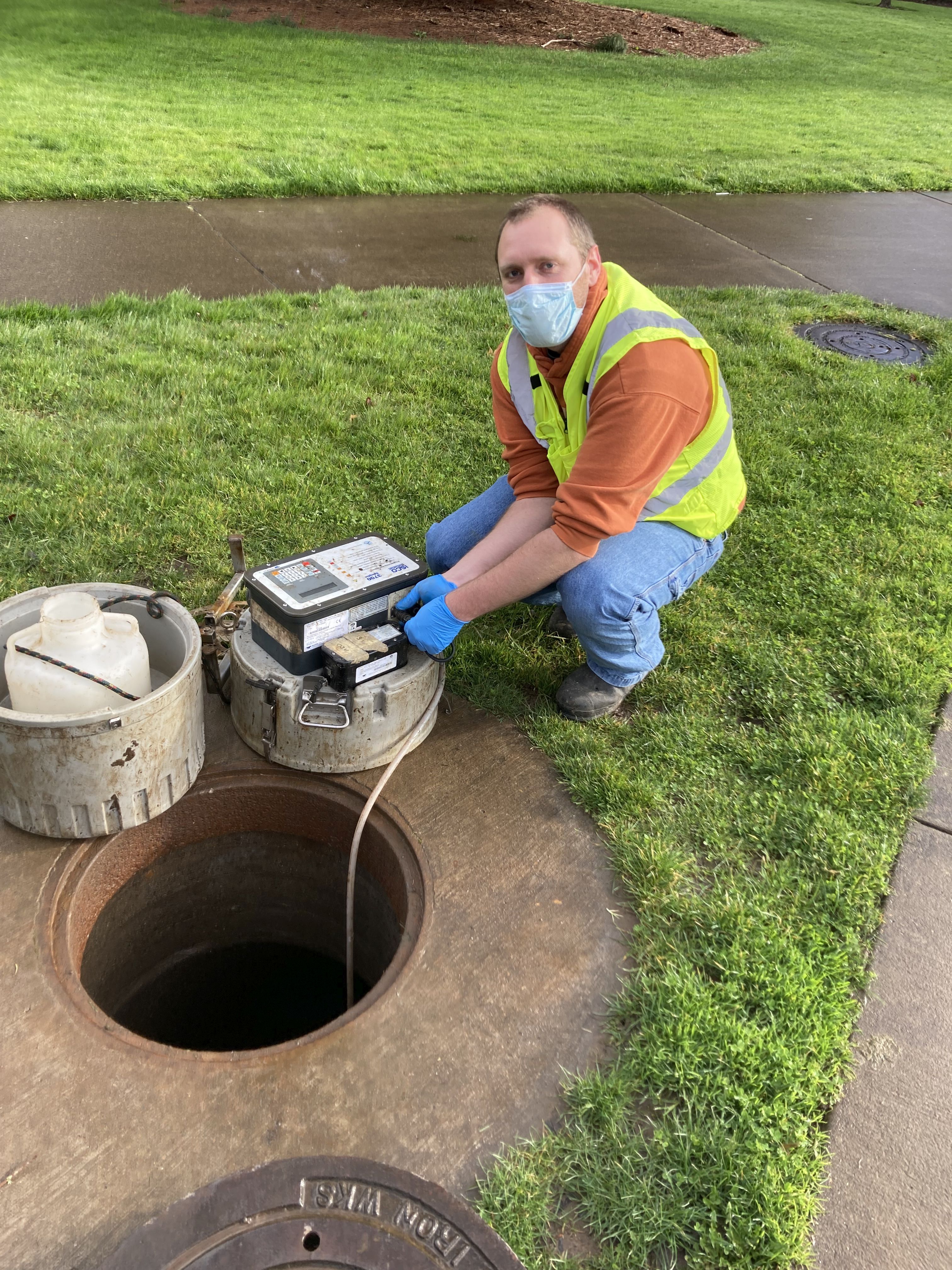In an effort to monitor the movement of SARS-CoV-2 and its variants in Oregon communities, in collaboration with the Oregon Health Authority, we used microsewershed studies to investigate five cities having COVID-19 outbreaks, or where we were observing less correlation between public health metrics and wastewater influent concentrations of SARS-CoV-2. The following cities sewersheds were investigated:
• Woodburn (July and August 2021)
• Grants Pass (December 2021-January 2022)
• Astoria (December 2021-January 2022)
• Florence (June-July 2022)
• Dallas (February -March 2022)
The process began with selection of regions of the sewer map that offered adequate coverage of the city The locations were also checked for proper manhole depth, flow, and ease of access. The microsewersheds were sampled three times (one to two weeks apart) by setting iced autosamplers within or around manholes at each sample site for 24 hours. The autosamplers collected 24-hour composite samples which were then transported to the University on ice and analyzed. The 24-hour composite samples were comprised of 50 ml samples collected every 15 minutes. Data analysis is still in progress, but we did observe variants entering and then spreading throughout a community, the impact of hospital sewer flows in diminishing signals, and the probable impact of community visitors.

